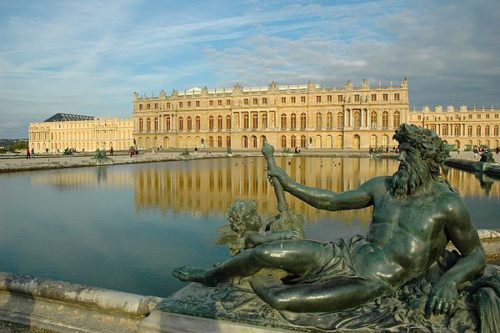Architectural History
The Renaissance and The Baroque
Architectural History is always fun. I love imagining the people who lived in these buildings and their lives. When we started this series last week we suffered a small but irritating technology issue when we changed formats on our blog. Our geeks are working on it but for today, we are back to our standard format. We left off at the Gothic period full and scary forms and towering cathedrals.
The Renaissance: 1400 – 1600
The word Renaissance comes from the term re-birth and truly signifies an emphasis on the orders of ancient Greece. After the overly elaborate almost scary forms from the Gothic period, it really was a rebirth. Spanning two centuries this period reflects the substantial changes in the world that were occurring with a growing importance on mathematics and art.
The Renaissance began in Italy and was the growth of arts of all kinds, paintings, sculptures, and tapestries. The early part of the period brought us probably the most important architect Andrea Palladio (1508-1580) whose influence is still felt worldwide today.

Palladio’s Villa Rotonda
Building exteriors were full of pediments, columns, and arcades. All building had symmetry, proportion, and geometry.
It was a time of great learning. Artists like Da Vinci were more than painters they were architects, artists, inventors, and mathematicians.

De Vinci’s Vitruvian man is an example of his use of the golden rule in studies of proportion and has set the use of ratios in art and architecture forever.

It is in the renaissance that decorative motifs come into their own. Urns, grotesque figures, foliage shells, vases, and cartouches were carved and eventually molded out of plaster on many buildings.
In England, the great Inigo Jones who studied Palladio’s work placed a great deal of focus on symmetry. Covent Garden, and developed the muse in the back of the apartments in London. (a feature still found only in London) and Queens house in Greenwich

and Banqueting House in Westminster built for James 1 in 1619-1625 are all great examples of his work.

Baroque 1590 – 1760 The Origins of French Style
Following the Renaissance The Baroque coincided with additional developments in science and mathematics. In Italy, the Baroque style is reflected in more opulent and dramatic churches with irregular shapes and extravagant ornamentation.
While in France, the highly ornamented Baroque style combines classical restraint with opulence drawn from the reign of Louis XIV who built Versaille (1682-1789). Note this whole building could be a period unto itself.

Russian aristocrats were so impressed by Versailles that they incorporated Baroque ideas in the building of St. Petersburg.
All of the Baroque architects took classical motifs and then created a stronger sense of drama.
In England substantial building occurred after the fire of London especially the Greenwich Hospital. Pictured below this building was designed for King Charles and then expanded by Christopher Wren for Queen Mary II as a seaman hospital and home.

Part of the design of the building came from Mary herself when it emerged that the original plans for the hospital would have blocked the riverside view from the Queen’s House designed by Ingio Jones. She ordered that the buildings be split, providing an avenue leading from the river through the hospital grounds up to the Queen’s House and Greenwich Hill beyond
Next week we will cover the Rococo and Neoclassical Period and hopefully, technology will be on my side by then. Caio, Lydia

